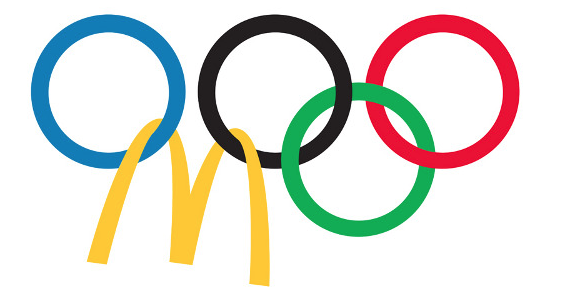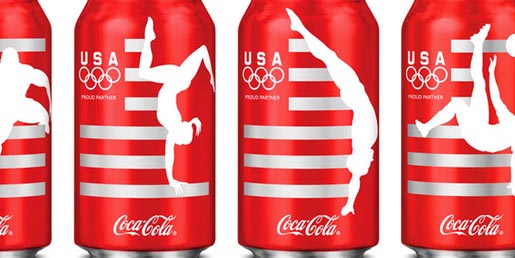 by Dr. Phil Maffetone.
by Dr. Phil Maffetone.
The lead story in a recent Sports Illustrated article online began, ?Almost every dominant performance in London has raised eyebrows, if not questions. These are today?s Olympics.? While the article went on to discuss the unhealthy issue of doping in sports, those two simple sentences brought to mind an even more serious and greater common problem.
Hundreds of millions of people around the world watched the London 2012 Olympic Games on TV. They saw some great performances, heart-breaking disappointments, and far too many commercials for junk food and beverages.
Certainly, junk food has contributed not only to the worldwide obesity epidemic, but heart disease and other illnesses. But now, after years in the making, it?s finally being recognized that it?s not only couch potatoes who are getting unhealthy, it?s athletes too.
The growing awareness includes athletes on all levels, including Olympians. Two conditions dominate: debilitating diseases referred to as chronic (meaning they?ve been simmering in an unhealthy body for years), and also, the real but sensitive issue of too much body fat.

There's a giant McDonald's in the heart of London's Olympic Park -- in fact, it's the world's largest McDonald's and can seat 1,500.Once the Games are over, the McDonald's will be torn down, but not before serving 3,000,000 people.
There?s a giant McDonald?s in the heart of London?s Olympic Park ? in fact, it?s the world?s largest McDonald?s and can seat 1,500. The golden arches and Olympic gold seem to go hand in hand, and hardly anyone cares. Once the Games are over, the McDonald?s will be torn down, but not before serving 3,000,000 people.
And what is the message being sent to fans as well as athletes? That you can be fit but also unhealthy?
In the 2007 U.S. marathon trials, Ryan Shay, one of America?s best and a favorite for the Olympic team, collapsed and died about five miles into the race. It was sad, of course, any way we look at it. Ryan had a heart attack. But why were so many people confused about the death of such a great athlete at age 28, New York City?s Chief Medical Examiner, who added to the confusion with his report, said the cause of Shay?s death was, ?cardiac arrhythmia due to cardiac hypertrophy with patchy fibrosis of undetermined etiology. Natural causes.? Natural causes? There?s nothing natural about a young, very fit athlete whose heart stops during competition.
Today, news reports of athletes dying in the course of competition are not uncommon. (Tragically, a competitor died in the first-ever New York City Ironman triathlon on Saturday after suffering a heart attack during the 2.4-mile swim portion in the Hudson River.) While we take physical injury as an intrinsic element of sports, we?re bewildered when a seemingly healthy and young athlete drops dead. But healthy people don?t have heart attacks.
Alberto Salazar, currently a distance coach for Nike and former national and world champion from 5K to the marathon, was moments away from death when his heart attack hit at 48 years young. Salazar asked his cardiologist, Todd Caulfield, M.D., Provident St. Vincent Medical Center in Portland, Oregon, to speak publicly about his condition, which included previous medications for high blood pressure and cholesterol, which could not prevent the heart attack.
I mean no harm to Alberto, who is a great guy. And two of his athletes won gold and silver in the 10,000-meter event in London?England?s Mo Farah and America?s Galen Rupp finishing first and second, respectively, with Farah also winning gold in the 5,000 and Rupp coming in 1oth.
Former basketball star Hank Gathers, bestselling running author Jim Fixx, and many other very fit athletes from amateurs to professionals in all sports, and too many more whose names are not popular, have died or came close to death during training and competition. In most cases, their conditions were preventable.
In active individuals, prevention of heart disease, which is commonly accompanied by high blood fats and hypertension, is primarily accomplished by a healthy diet. The Centers for Disease Control and Preventions (CDC) list four habits that cause preventable conditions such as heart disease: smoking, inactivity, alcohol abuse, and diet. While most athletes don?t have problems with the first three, they do have very poor eating habits. (I?ve performed thousands of computerized dietary assessments in athletes throughout my career.)
But a serious problem is brewing. Is the world accepting of fit athletes dying at young ages? After all, in non-contact sports such as running, cycling, triathlon and others, injuries are now considered part of the game. Overtraining may be the most common cause of chronic injuries, and not just physical impairments but those of a chemical nature (such as fatigue) and mental ones (depression).
As great as many athletes may be, reductions in their health will also impair their performance to some degree.
As American sprinter Manteo Mitchell got midway through the start of the 400-meter relay in the London Games, he felt, and heard, his leg crack. But he could not stop, sprinting the best he could to finish his part of the relay, enabling the American team to finish second and move on the finals.
A victory, no doubt, and an incredibly courageous effort by a young Olympian. Gutsy, heroic, and moments the Olympic Game?s are often remembered for. Afterwards Mitchell would find out the bone on the outside of his leg (the fibia) had fractured.
Without discounting Mitchell?s valor, I can?t help but think of something even more unsettling?why would a young, super-fit athlete?s bone fracture during a short running event? Mitchell thought that perhaps his misstep while walking the stairs a few days earlier caused it. But leading up to the race, including his warm up, he ran without any problem.
Bones don?t just break, especially in a highly trained, elite athlete, without some physiologic reason. It could from muscle or hormone imbalance or other causes, but most likely due to some health problem contributing to a weak bone in a fit body.
***
Looking at the broader picture, a much more sensitive and equally serious issue is that the ?fat fallout? from the worldwide obesity epidemic has reached the athletic community. Perhaps for the first time, this Olympics has spawned a few controversial articles about overweight competitors, bringing to light the reality that fit but overfat athletes do exist.
Certainly those of us, like myself, who have worked with athletes for many years have seen this problem brewing for decades. The question will be whether the weekend warrior and recreational runners will accept this overfat state. It?s even prevalent in triathlons, despite all the training hours that participants have logged.
While some athletes clearly have too much body fat?you can see it, and it?s also been measured?others who appear slim have their fat elsewhere. Salazar is not an unusual case?some of his arteries were 80 percent clogged with fat.
 I wish I could help. But I?m just a David among Goliath corporations?deep-pocketed gargantuan whose goals are to make the entire world fat. And they?re exploiting athletes to help their propaganda succeed. Case in point: Coke is celebrating the 2012 Olympics with specially marked cans. By the way, that?s the equivalent of 8 teaspoons of sugar for each 12-oz serving (it?s actually made with high-fructose corn syrup).
I wish I could help. But I?m just a David among Goliath corporations?deep-pocketed gargantuan whose goals are to make the entire world fat. And they?re exploiting athletes to help their propaganda succeed. Case in point: Coke is celebrating the 2012 Olympics with specially marked cans. By the way, that?s the equivalent of 8 teaspoons of sugar for each 12-oz serving (it?s actually made with high-fructose corn syrup).
A key message of soft drink and junk food companies is that sugar?one of the main causes of the overfat epidemic?is good for everyone. As an athlete, you might even believe it can help with energy. No surprise here that PowerAde is owned by Coca-Cola, and Gatorade is owned by Pepsi. But the fact is, 40 to 50 percent of the sugar one eats, athlete or not, turns to fat and goes into the body?s storage spaces. In doing so, it can raise blood fats, contribute to hypertension and increase the risk of death from heart disease. Moreover, it can impair energy regulation.
Refined sugar intake can increase the body?s production of insulin, which, among other problems, can reduce the amount of fat burned during exercise. While the body burns both sugar and fat calories for energy, the proper balance of these fuels is important for weight control and overall health?and athletic proficiency.
The very companies that sponsor the Olympics are doing a lot of the dirty work. McDonald?s and Coca-Cola are banking on the fact that their Olympic marketing campaigns have been highly successful?especially?with children and teens who, these companies hope, will become lifelong customers.
The same marketing tactics were used by cigarette brand Virginia Slims. The cigarette company sponsored athletic events?not just tennis but even a New York City 10K running race?for years before lawsuits prevented tobacco companies from advertising in print, TV and radio. Is there anyone (besides Big Tobacco) that can?t see the conflict of interest here?
The conflict of interest is just as obvious in companies that advertise sugar-laden soft drinks and other junk food during the Olympics. But the level of acceptance with these unhealthy food products is not yet like that of tobacco.
Society cannot keep avoiding the obvious and continue allowing companies to reap financial benefits by selling harmful products?the very foods that significantly contribute to heart disease and other deadly conditions?while portraying slim, healthy-looking individuals using the products. In the 1950s, doctors were seen in magazine print ads claiming that smoking cigarettes was actually good for you.
It?s not a stretch, but imagine the Mexican drug cartel or the Russian mafia vying for an Olympic sponsorship. I could see the ads: ?Our products are 100 percent natural?we guarantee it!? Or, ?when your bank says ?no? we will lend you money in a heartbeat?no credit, no problem.?
This is not all that farfetched. I could also imagine the outcry.
But the cries about junk food are only starting to be heard. While society has accepted Coke and McDonald?s, and the hundreds of other companies making deadly products, there may be hope. A movement has been underway by people who want to ban the sale of unhealthy products in places like schools, cities and even countries.
In the meantime, prime time TV?will continue portraying athletes who are fit, not necessarily healthy, while, unfortunately, more athletes will die an untimely death, typically from a preventable condition.
Dr. Phil Maffetone?s most recent book is ?The Big Book of Health and Fitness.?
?
?
You may be interested in these similar articles:
- Running Attire and Footwear for a 1904 Olympic Marathoner
Tropical Storm Debby fox news legend of korra lebron james magic mike trailer Alan Turing brave
No comments:
Post a Comment
Note: Only a member of this blog may post a comment.